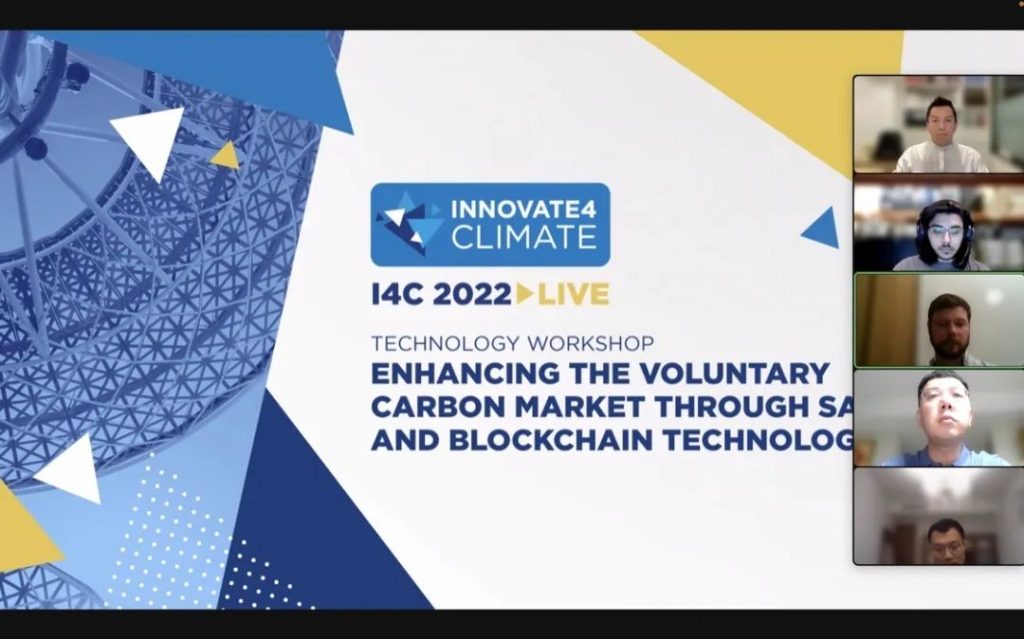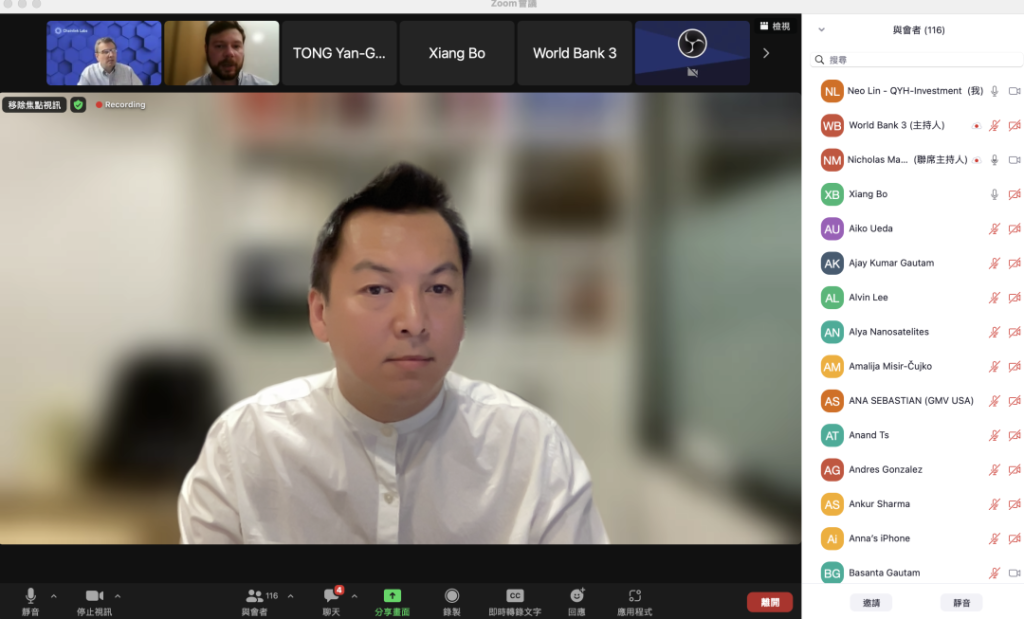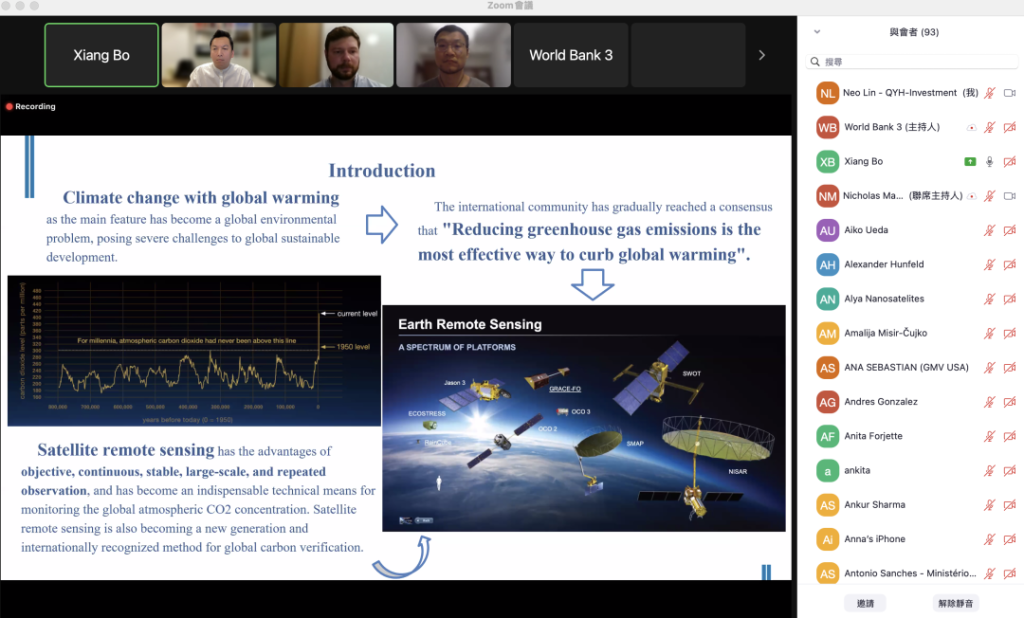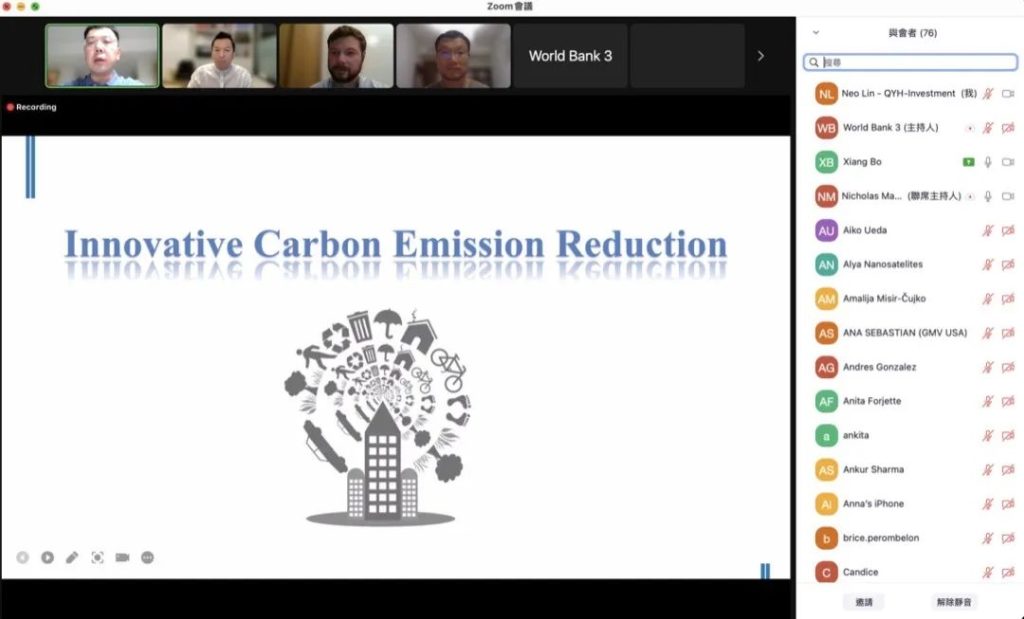
On the evening of May 24th, a workshop hosted during the 6th Innovate4Climae (I4C), by QYH CEO Neo Lin, Dr. Xiang Bo (Chief Engineer of the Institute of Space Information Innovation of CAS), and Mr. Tong Yan (Head of Carbon Finance Business at Guotai Junan Securities FICC), concluded successfully. The workshop centered on the theme of “Enhancing the Voluntary Carbon Market through Satellite and Blockchain Technology” and discussed how to leverage these technologies to improve the efficiency, transparency, and integrity of the voluntary carbon market.

This workshop attracted approximately 120 international attendees and received significant attention. They raised many excellent questions, demonstrating a profound interest in the topic.

Q&A Section
Q: Through your presentation, we have learned about many benefits of applying blockchain technology [to the market]. However, in many countries, the reality is that they often struggle to access and use such technology. So, for developing countries or the least developed ones, what are the risks and challenges of applying these technologies?
A: We believe that the difficulty isn’t necessarily with the technology itself; blockchain systems are quite mature and user-friendly. The real challenges may arise from certain institutions, companies, or governments being reluctant to openly share their data or relinquish control over the data they hold. It may take time and extensive communication efforts to address this. So, if the goal is to establish a disclosure system for a specific carbon reduction region, it will require some time and negotiation with these stakeholders. With shared interest in mind, they may become more willing to share their data and collaborate further.
Q: How high are the costs associated with generating carbon credits through blockchain technology?
A: We believe the costs are not very high. I understand that different countries have different standards, but in the case of China, the cost of implementing a simple blockchain system for this purpose would not exceed 1 million RMB, which is affordable for a small community or business.
Q: Currently, the four major VCM standards commonly used are GS, VERRA, ACR, and CER. How can we facilitate registration outside of these four standards?
A: Regarding the major VCM standards, it’s possible that they could have restrictions regarding the use of their standards and registries. However, we believe that every country, especially developing ones, should establish their own systems and allow these registration organizations to connect with their own systems. This way, data can be synchronized among them. We certainly do not intend to interfere with the registration management of the four major organizations. We simply hope that information can be synchronized between systems and local databases, making them accessible to local governments, stakeholders, and businesses.
Q: If you don’t rely on these commonly used voluntary standards in the market, how can you establish the credibility of carbon credits? Also, different types of projects in the market currently have different prices. How are prices determined?
A: Before we can have these carbon credits, we must first establish some standards for generating them. We believe that technology is not the variable; initially, we should establish standards for satellite monitoring and blockchain.

Pricing is similar with integrity. Once emissions and emissions reduction data are successfully monitored, it will facilitate the creation of supply and demand models, which are key factors influencing carbon credit prices.


Leave a Reply